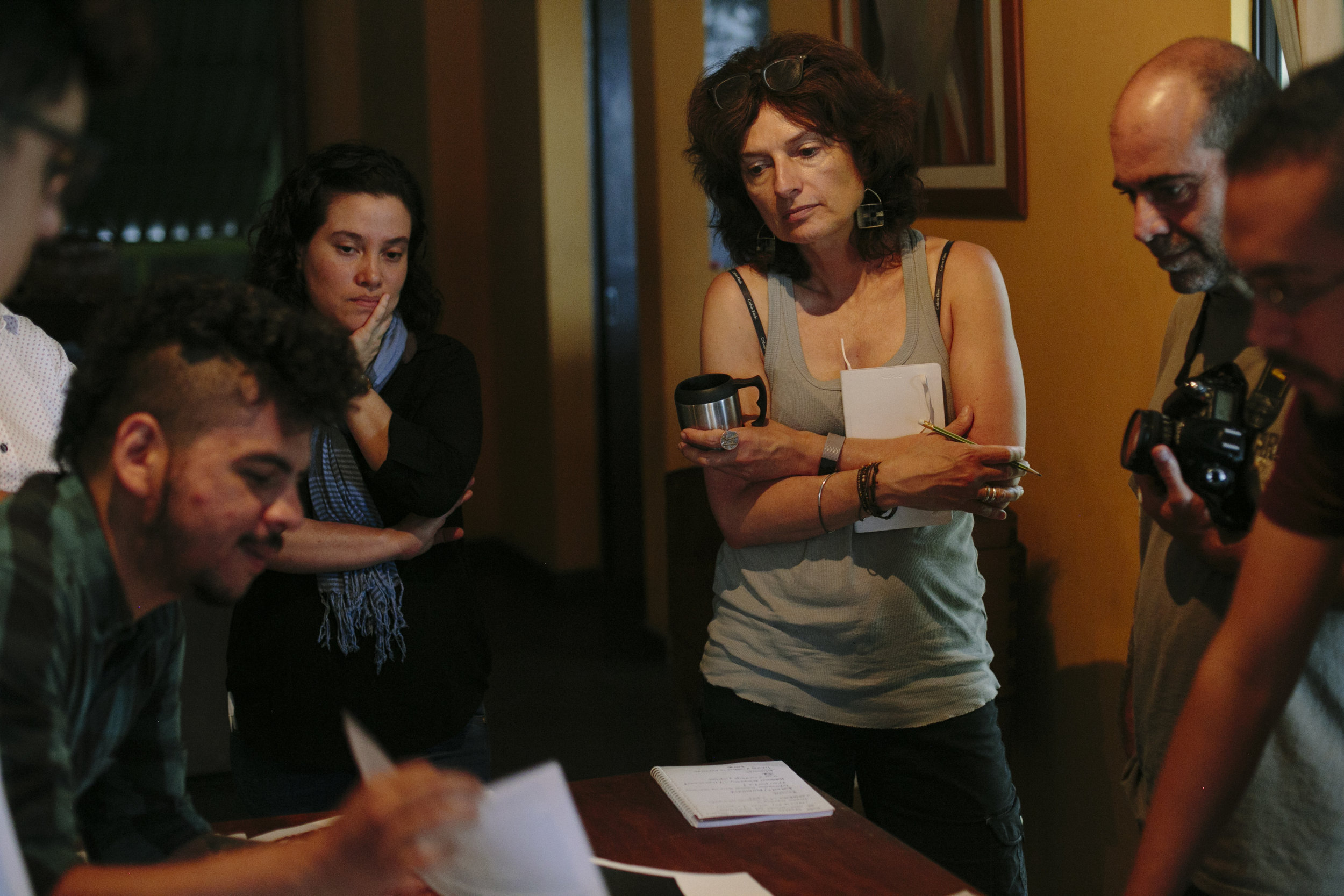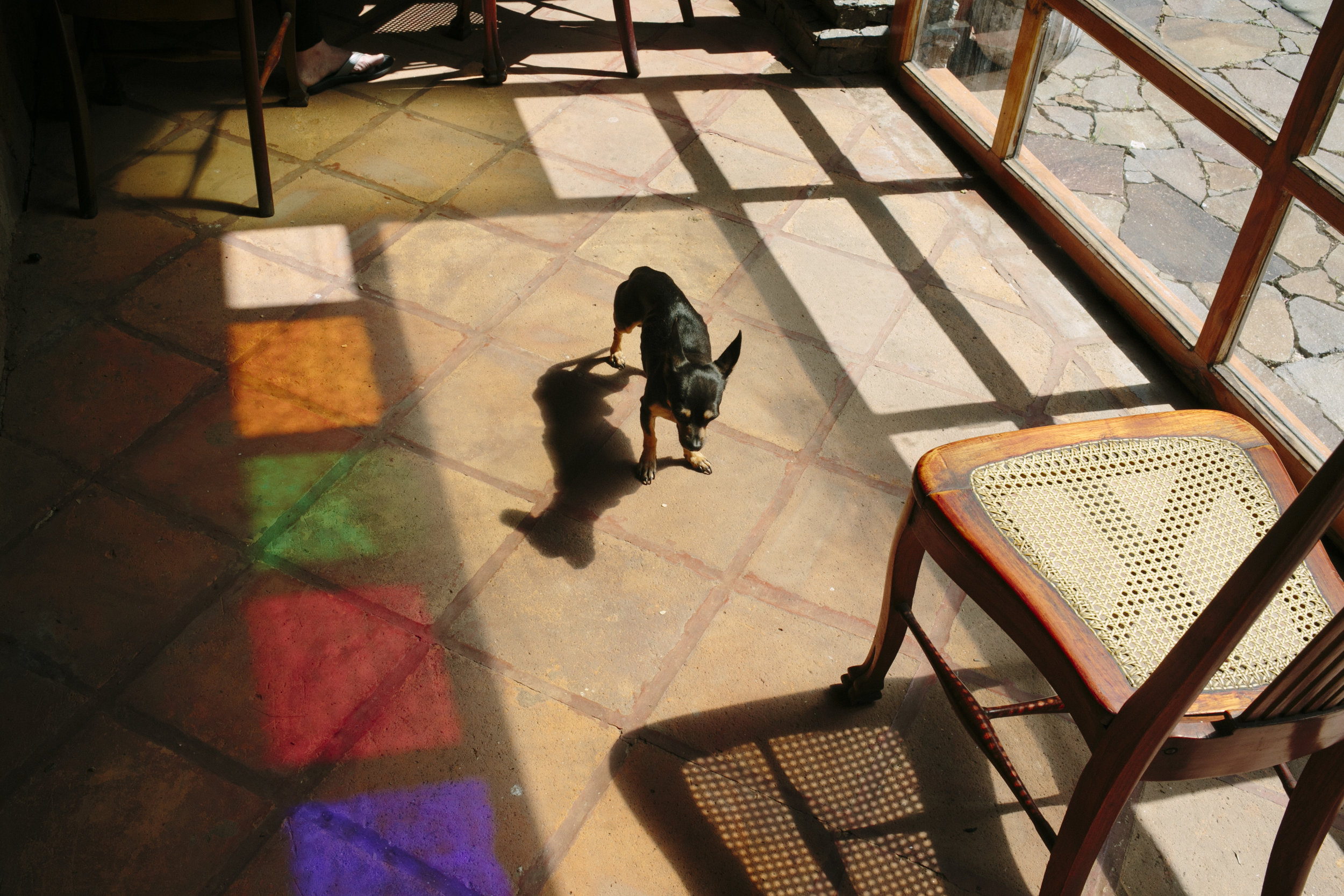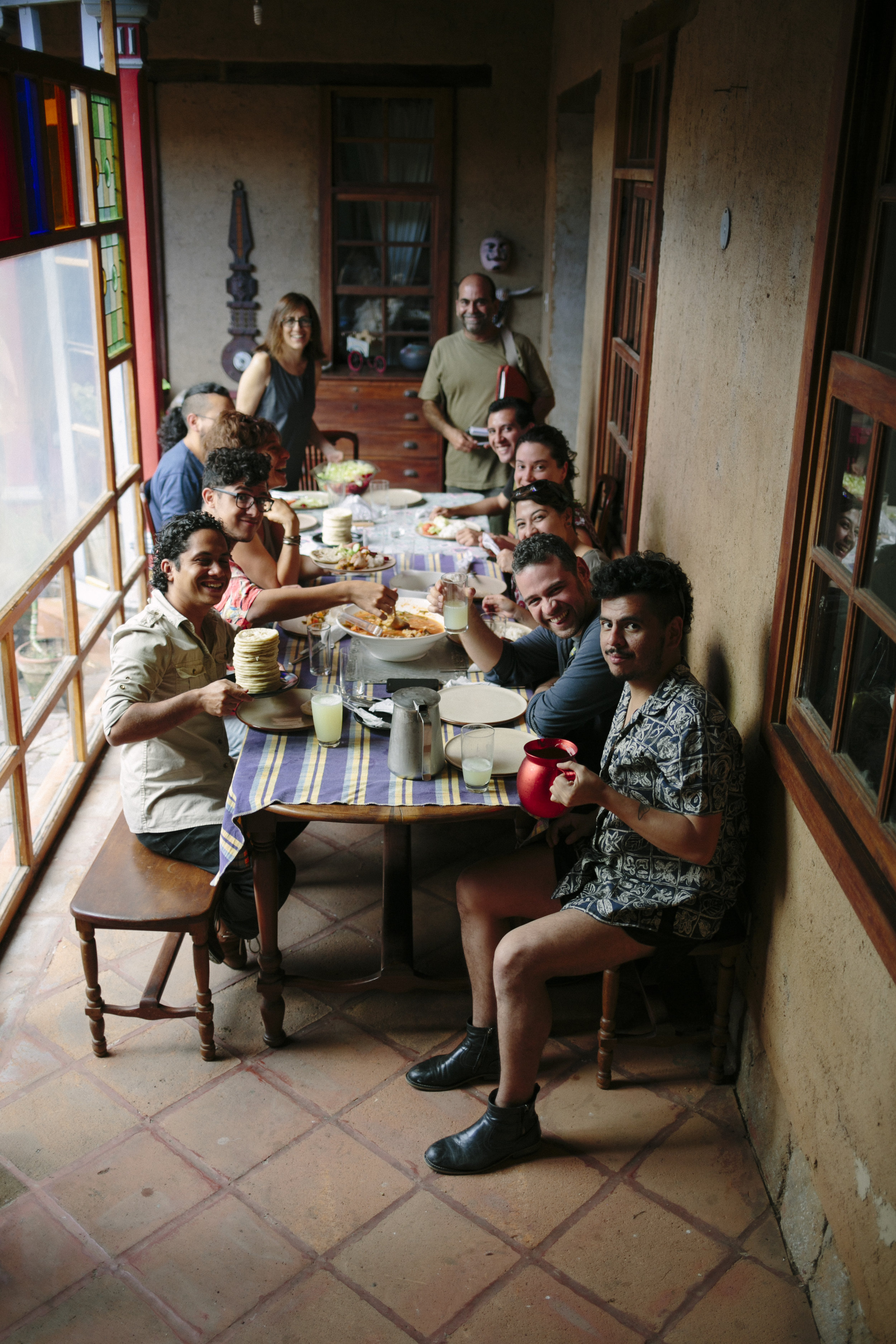THE ARTIST AND THE ARCHIVE:
MURIEL HASBUN
Photo: Muriel Hasbun, X post facto (0.1-0.3) archival pigment prints, 2009/2013.
Location: Lake Coatepeque, El Salvador
Dates: July 13-19, 2017
PROGRAM SUMMARY
Master Artist Muriel Hasbun will lead a 7-day intensive art workshop in which participants will explore archives as the source material for making new work. Archives embody knowledge, memories and stories. In the most general sense, archives include private and public repositories of historically relevant records as well as personally significant assemblages of objects, photographs, and documents. The workshop will provide an overview of contemporary thinking about archives and the multiple ways that artists have mediated archives to make art. For example, the scholar Geoffrey Batchen considers archives as sites of exchange and Hal Foster states in “The Archival Impulse” that archives establish a site of “alternative knowledge or counter-memory.” These and other concepts will be incorporated in discussions toward generating new artworks and bodies of knowledge.
Participants should bring archival material to work with during the workshop, digitized or actual. Each participant will present their intended project to the group, and through experimentation, discussion and critique, will learn how to research, (re)contextualize, build narrative and expose knowledge. At the end of the workshop, participants will have developed a strategy to approach their own archive and will have made significant progress in developing a new body of work.
MASTER ARTIST: MURIEL HASBUN
Muriel Hasbun has used archives as part of her artistic practice for 30 years, constructing contemporary narratives and establishing a space for dialogue where individual and collective memory spark new questions about identity and place. Her expertise as an artist and as an educator focuses on issues of cultural identity and memory, as well as on the promotion of cultural exchange.
Hasbun’s bodies of work create a relationship between the private and public realms of archives, shedding light on how the personal becomes part of collective experience and knowledge. Her many series, such as X-post facto, Saints and Shadows and Protegida: Auvergne - Toi et Moi, all pull on public and private archives. In her words, dental records, immigration papers and her grandmother’s linens are “documents turned into metaphor,” expanding the scope and meaning of their original intent. Her interactive installations such as barquitos de papel/paper boats, Documented: The Community Blackboard and ARTE VOZ use the archive as a resource but also create an inclusive, collaborative and transnational model where individuals and communities can recognize themselves and become empowered through the exchange and affirmation of their personal narratives in the public sphere.
Hasbun is the recipient of numerous distinctions, including: a Smithsonian Artist Research Fellowship, the Howard Chapnick Grant of the W. Eugene Smith Memorial Fund for laberinto projects (2014); a Museums Connect grant funded by the U.S. Department of State and the American Association of Museums (2011-12); the Corcoran’s Outstanding Creative Research Faculty Award (2007) and a Fulbright Scholar Grant (2006-2008). Hasbun’s photo-based work has been internationally exhibited in venues such as PINTA Miami, Civilian Art Projects (2016), American University Museum (2016, 2008); Centro Cultural de España in San Salvador (2016, 2015, 2006); Smithsonian American Art Museum (2013, 2011); Mexican Cultural Institute (2011); Houston’s FotoFest (2006), the Corcoran Gallery of Art (2004); the 50th Venice Biennale (2003); the Centro de la Imagen in Mexico City (1999); and the Musée de l’Arles Antique at the 29ème Rencontres Internationales de la Photographie d’Arles (1998). Public collections include the Art Museum of the Americas, District of Columbia Art Bank, En Foco, Lehigh University, Smithsonian American Art Museum, University of Texas-Austin and the Bibliothèque Nationale de France.
Most recently, Muriel Hasbun was Professor and Program Head of Photography at the Corcoran School of Arts & Design at GWU. She is now Professor Emeritus and the founder and director of laberinto projects.
WHAT TO EXPECT
Share and participate in an opening dinner for the class the eve of the first day of the workshop
Bring an idea and access to archival materials (digitized or actual)
Learn how the archive works as a resource and as a prompter for the generation of knowledge and the making of art
Learn the processes, systems and techniques of working with archives: research, inventories, contextualization and exploring new material
Engage in an iterative process of experimentation and critique, in a creative, supportive community atmosphere with fellow participants
Attend lectures and participate in presentations
Meet individually with Muriel Hasbun over the course of the workshop at specific and multiple times
Participate in review periods among peers to strengthen narratives and approaches
THE PLACE
Laberinto Institute was brilliantly designed by the French-Salvadoran Janine Janowski, a renowned arts icon in the country and the architect Javier Sagarra. After building it she famously said that the view was so beautiful, it distracted her from getting any work done. The architecture embodies the four classical elements of nature –earth, water, fire and air. It features two distinct spaces that offer the perfect balance of contemplation and connection-- the outward beauty of the landscape and the internal recognition and reflection of it.
The house is perched over the beautiful Coatepeque lake, across from the Santa Ana and Cerro Verde volcanoes. The lake, in the center of the volcanic crater, is mythically known as being the unofficial 8th world wonder. We encourage you to search Lago de Coatepeque, and read more about the lake and the surrounding area.
Laberinto Institute, a landmark in the history and legacy of galería el laberinto, is a living distillation of Janine Janowski’s artistic and curatorial vision. The house was conceived by Janine and the late Salvadoran architect Javier Sagarra within a kind of artistic and social activism. Built with salvaged materials of personal and historical significance, the leading architectural principle was an expression of cultural recovery and a response to the natural landscape. Architectural drawings reveal the labyrinthian design of the house and hint at Janine’s philosophical framework for the creative life.
ABOUT LABERINTO PROJECTS
laberinto projects is an arts, education and cultural legacy preservation platform that fosters contemporary art practices, social inclusion and dialogue in El Salvador and its diaspora.
At the core of laberinto projects is the belief that art serves as a catalyst to shape civil society. We provide a new framework for art practice, cultural studies and for the access, collection and distribution of knowledge.
We aim to establish an art historical continuum in El Salvador and Central America through the study, conservation, digitization and dissemination of significant archives and collections --including the laberinto projects’ archive which documents the history of galería el laberinto and the country’s most significant collection of art produced during the civil war and post-war period.
laberinto projects’ objectives are:
- To promote and nurture the existing contemporary arts of Central America and its diaspora;
- To foster meaningful exchanges, healing, conflict resolution and social transformation through exhibitions, art education and community initiatives;
- To stimulate a collaborative and active educational model for lifelong learning and creative problem-solving
- To promote research and the production of new works

























































